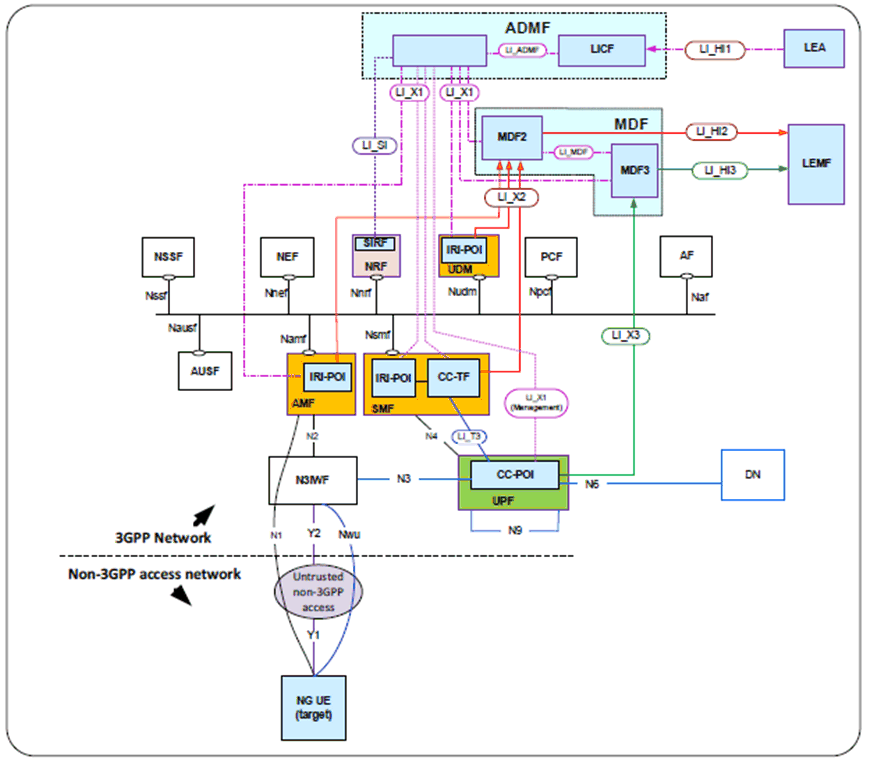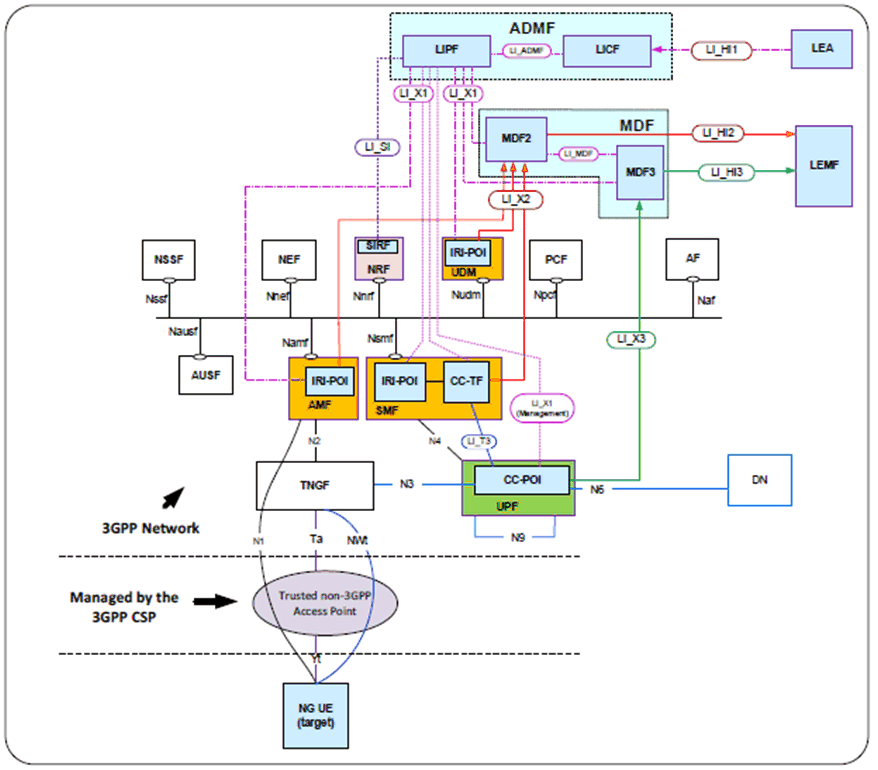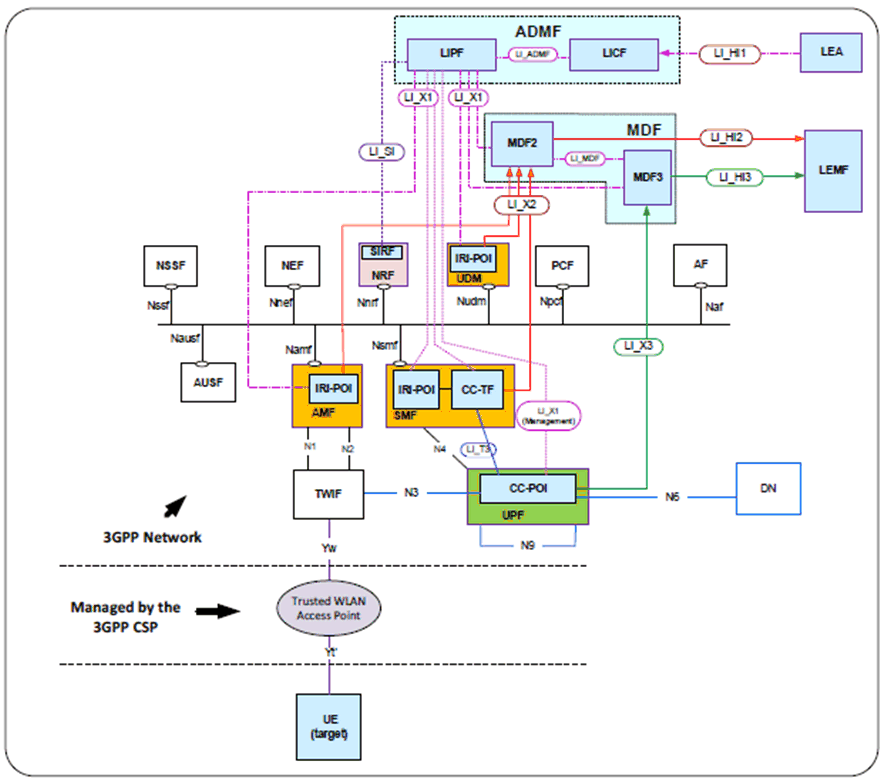Content for TS 33.127 Word version: 19.1.0
0…
5…
5.4…
5.6…
5.7…
6…
6.2.2…
6.2.3…
6.2.5…
6.3…
6.3.3…
6.3.4…
6.4…
7…
7.3…
7.4…
7.4.7…
7.5…
7.6…
7.7…
7.8…
7.9…
7.10…
7.11…
7.12…
7.13…
7.14…
7.15…
7.16…
8…
A…
A.2…
A.3…
A.4…
B…
D…
E…
A.4 Non-3GPP access in a non-roaming scenario p. 167
A.4.1 General p. 167
When the target UE is connected to the 5G core network via non-3GPP access, the POIs present in the following NFs of the PLMN where the N3A Entity resides provide the LI functions:
- AMF.
- SMF.
- UPF.
- SMSF.
A.4.2 Topology view p. 168
The overall network configuration for non-3GPP access in a non-roaming scenario with the LI aspects is shown in Figure A.4.2-1, Figure A.4.2-2 and Figure A.4.2-3. In these views, the target UE is not connected to a 3GPP access network.
The 5G core system is shown in the following figures the service-based representation (as shown in TS 23.501) with the use of point-to-point LI system.

Figure A.4.2-1: Network topology showing LI for non-3GPP access to 5G via N3IWF
(⇒ copy of original 3GPP image)
(⇒ copy of original 3GPP image)

Figure A.4.2-2: Network topology showing LI for non-3GPP access to 5G via TNGF
(⇒ copy of original 3GPP image)
(⇒ copy of original 3GPP image)

Figure A.4.2-3: Network topology showing LI for non-3GPP access to 5G via TWIF
(⇒ copy of original 3GPP image)
(⇒ copy of original 3GPP image)
The IRI-POIs present in the AMF, UDM, SMSF and SMF deliver the xIRI to the MDF2 and CC-POI present in the UPF delivers the xCC to the MDF3. The MDF3 address to CC-POI present in UPF is provided by the CC-TF present in the SMF over LI_T3 reference point.
The LIPF present in the ADMF provisions the IRI-POIs and the CC-TF present in the NFs with the intercept related data. The LI_X1 interfaces between the LIPF and the UPF is to monitor the user plane data.